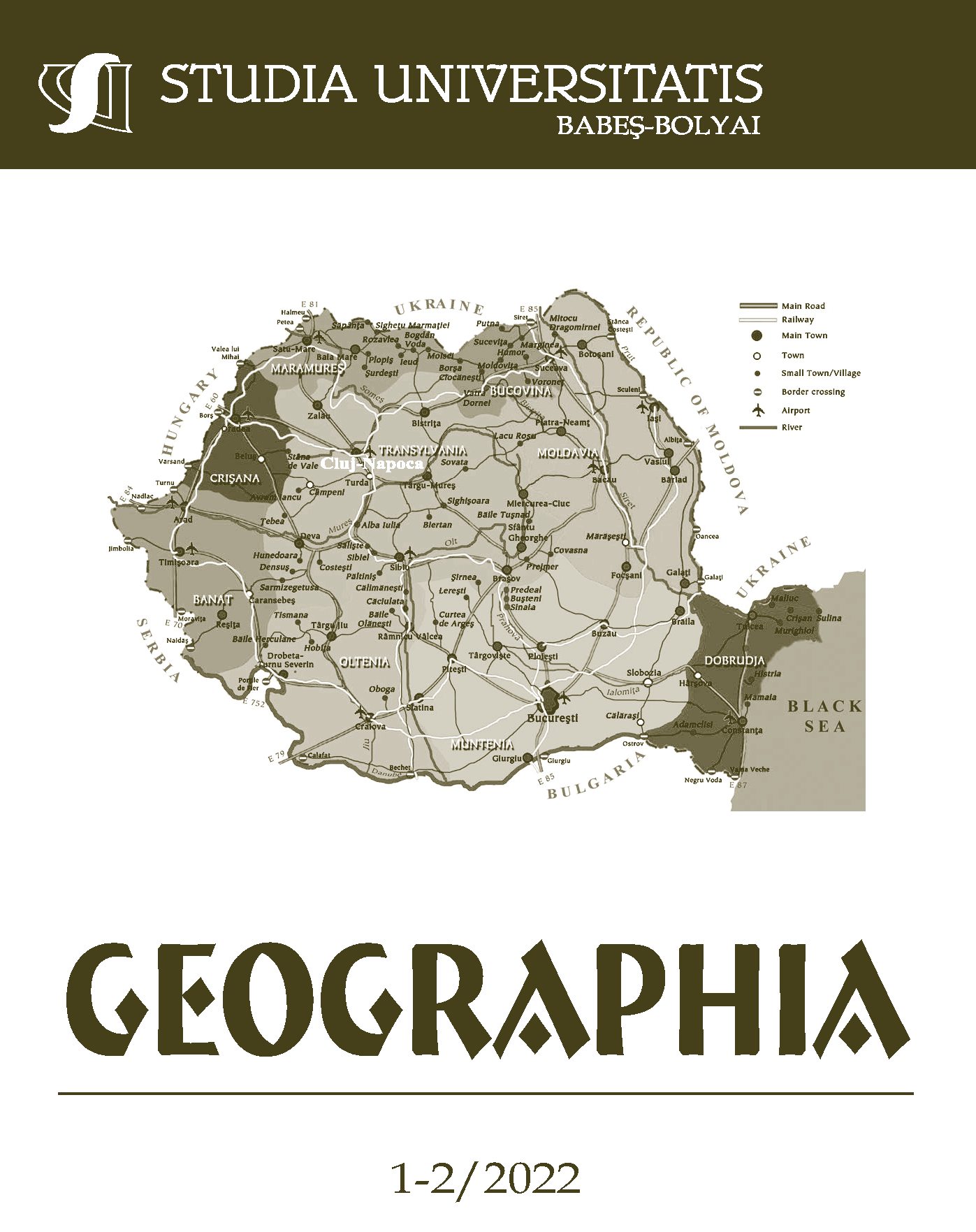GEOGRAPHICAL AXES AND MOBILITY. CASE STUDY: CLUJ COUNTY
DOI:
https://doi.org/10.24193/subbgeogr.2022.05Keywords:
environmental, transportation axes, sustainability, green logistics.Abstract
The movements of goods, people and information from one point to another have always represented important elements of human society. This mobility can take many forms from public transportation to private transportation or biking. The need of a developed transport system increased with the economic changes and growth of Cluj County, to satisfy the urban mobility. Moreover the direction for the expanding of this sector should be first of all sustainable, environmentally-friendly, a solution to decongest the traffic and must involve not only the government or the local authorities, but also the private and industrial sectors.References
Benedek, J. (2004), Amenajarea teritoriului și dezvoltarea regională, Presa Universitară Clujeană, Cluj-Napoca.
Cocean, P., Filip, S. (2011), Geografia Regională a României, Presa Universitară Clujeană, Cluj-Napoca.
Pop, C.C. (2003), Dimensiunea geografică a Axei Jibou-Zalău-Șimleul Silvaniei-Marghita. Studiu de geografie integrată, Edit. Silvania, Zalău.
Pop, C.C. (2007), The Human Concentration Axis in the Sălaj County and the Durable Development, in: Surd, V., Zotic, V. (eds.), “Rural Space and Local Development”, Edit. Presa Universitară Clujeană, Cluj-Napoca, pp. 458-462.
Pop, C.C. (2016), Axele geografice: structuri teritoriale inteligente, Casa Cărţii de Ştiinţă, Cluj-Napoca.
Pop, C.C. (2016), Geographical Axis Theory. Role and Function in Building Territorial Social Realities, Revista de Cercetare și Intervenție Socială, 52, pp. 283-293, Iași.
Pop, C.C., Pop, C.D., Săplăcan Cerasela Cristina, Pintea Cecilia Geanina (2019), Industrial Groupings and Settlements. Units and Structures in the Form of Geographical Axes, Studii și Cercetări Geology-Geography, 22, 79-87, Bistriţa, Editura Ecou Transilvan.
Pop, C.C., Corpade Ana-Maria, Pop, C.D., Panie, S., Lazăr Aurelia-Daniela, Săplăcan Cerasela Cristina, Pintea Cecilia Geanina, Ormenişan, V.S. (2021), Certain aspects regarding the environmental axes: Models in the Romanian Carpathian Space, Environmental Engineering and Management Journal, Vol. 20, No. 7, 1057-1063;
Pop, G., (2007), Județul Cluj, Edit. Academiei Române, București.
Rodrigue, J-P., Comtois, C., Slack, B. (2013), The Geography of Transport Systems, Routledge, Abingdon.
Srinurak, N., Mishima, N. (2017), Urban Axis and City shape evaluation through spatial configuration in ‘Lan Na’ Northern Thailand Historic city, City, Territory and Architecture, 4, 10, DOI 10.1186/s40410-017-0067-z.
Szabó P., Farkas M. (2014), Different aspects of regional development in East-Central Europe, Romanian Review of Regional Studies, X, 2, 3-14.
Downloads
Published
How to Cite
Issue
Section
License
Copyright (c) 2022 Studia Universitatis Babeș-Bolyai Geographia

This work is licensed under a Creative Commons Attribution-NonCommercial-NoDerivatives 4.0 International License.





 ©Studia Universitatis Babeş-Bolyai Geographia. Published by Babeș-Bolyai University.
©Studia Universitatis Babeş-Bolyai Geographia. Published by Babeș-Bolyai University.